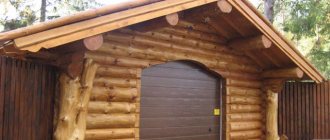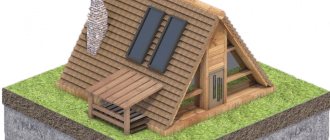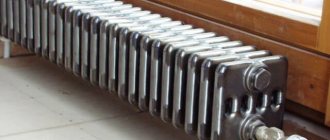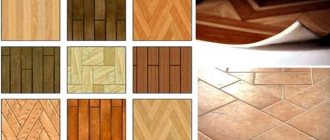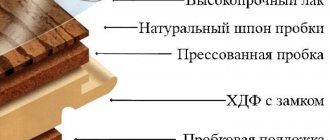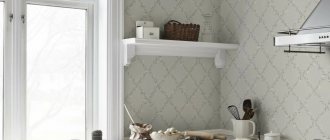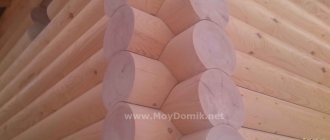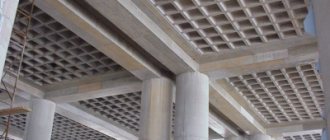Hi all! The range of thermal insulation materials is constantly expanding. At the same time, new developments appear that are noticeably superior to their predecessors, as well as competitors. New insulators include Tepofol insulation.
I would like to talk about what kind of material this is, what its features are, as well as how it is produced and in what industries it is used.
We will also touch on the topic of tepofol or penofol - which is better, since both materials are often compared with each other.
What it is?
Penofol is a two-layer heat-insulating building material, which can be made from one or 2 layers of foil applied to a base layer of polyethylene foam. Depending on the type of product, the density and thickness of the foam may vary. Utilitarian and inexpensive insulation is in great demand among buyers, because it has high performance characteristics.
A layer of foil, the thickness of which is 20 microns, provides penofol with excellent heat-reflecting qualities.
This insulation is used in everyday life and industry as the main insulating material or as an auxiliary thermal insulation layer.
Penofol is used as the main insulating material in cases where it is necessary to insulate a room with normal heat loss and where there is a powerful heating source (bathhouse, sauna, underfloor heating system in a wooden house). As an additional insulating building material, penofol is used to create complex heat insulation in residential and industrial premises, and such premises must be equipped with vapor barrier and waterproofing.
Installation features
Laying penofol is carried out with the foil side always towards the heat, so that it could be reflected into the room. To eliminate the risk of condensation, a ventilation gap of at least 10-20 mm wide is formed on this side. The edges of adjacent workpieces are joined closely without overlap. To ensure the integrity of the protective layer, the seams are additionally sealed with aluminum vapor barrier tape.
sealing seams with aluminum tape Source neoenerg.ru
For walls, it is recommended to choose samples up to 5 mm thick with one foil side. If such a fabric is insufficiently effective, you should first insulate the room with penoplex. It is better not to use mineral wool boards in order to avoid assembling additional sheathing.
Penofol can be attached to walls by gluing it to a clean primed surface or using a construction stapler (with staples). A counter-lattice made of slats or plywood pieces is mounted on top of the insulator. Drywall, chipboard or other rigid sheet materials are sewn onto the finished frame.
Advantages and disadvantages
The use of penofol has its advantages:
- The small thickness of the material allows you to create reliable thermal insulation of the room.
- Installation of building materials does not require special skills or special tools. Working with this material is much easier than with other types of insulation.
- The material is environmentally friendly, which makes it possible to use it for storing food.
- Fire safety. This building material belongs to the class of fire-resistant materials.
- Ease of transportation. The thickness of the product allows the insulation to be rolled up, which allows it to be transported in the luggage compartment of a car.
- Excellent sound insulation. Mounting penofol on top of the frame of building structures provides good insulation of extraneous sounds.
Penofol has not only positive qualities. There are also disadvantages to using this building material:
- The insulation is soft. Because of this, this product is not used for finishing plastered walls. When lightly pressed, the material bends.
- To fix the insulation you will need special adhesives. It is not recommended to nail it to the surface, because in this way penofol loses its thermal insulation qualities.
Advantages of foil insulation
Foil insulation qualitatively protects any surface, reflecting heat and preventing it from escaping outside. Its main advantages are:
- increased ability of foil material to reflect up to 95% of heat;
- excellent waterproofing - foil material retains moisture;
- such material does not freeze in winter and does not dry out in summer;
- provides excellent sound insulation - foil contributes to additional absorption of incoming noise;
- is an environmentally friendly material, safe for use in decoration;
- durable if installed correctly;
- An excellent solution against moisture accumulation on the ceiling.
Insulating the ceiling with foil insulation, in particular penofol , is gaining popularity every year for various reasons.
Interestingly, this material is a new ultra-thin polymer insulation , which is produced by foaming.
In this case, it is polyethylene foam welded to reflective aluminum foil. Foil insulation is excellent - and, contrary to popular belief, for this purpose you can use not only penofol or foil-isolon , but also basalt wool or polystyrene foam with metallized foil .
Types of Penofol
There are:
- Penofol "Type A" - aluminum foil on one side, the most widely used option.
- “Type ALP” - the foil is covered with a protective polymer film - is used when contact with concrete, which is aggressive towards aluminum, is possible.
- “Type B” - foil on both sides.
- “Type C” - on one side there is foil, on the other side there is an adhesive layer - the material can be glued to the surface.
- The material with foil, but perforated, is capable of passing steam through it in large quantities; there is no data on vapor permeability from the manufacturer.
There are 3 main types of penofol depending on production technology, dimensions and technical characteristics:
Type A
Polymer insulation material of varying thickness, foil is applied only to one side of the building material. This type of insulation is popular in complex insulation of building structures; it can also be combined with some insulation materials: glass wool, mineral wool.
Type B
Insulation covered with foil on both sides. Thanks to this design, the material has maximum insulation effect.
This type of insulation is used for thermal insulation of load-bearing structures of the attic, waterproofing of basements, floors and walls. Foil material placed under the roof prevents heat from entering the room.
Type C
Self-adhesive penofol, which is covered with foil on one side, and on the other, a thin layer of adhesive composition covered with film is applied to it. Depending on the dimensions of the product, it can be used on almost any surface, which saves time. Before starting work, this building material must be cut into strips of a certain size.
Regular penofol (types: A, B, C) has a white base, while penofol 2000 has a blue base.
There are several other types of penofol, which are not in great demand among consumers.
Type R
One-sided insulation, which has a relief pattern on the foil side of the insulation. It is similar to penofol type A, but is mainly used as a decorative special element for finishing premises.
There is penofol without a foil coating, which does not have a corresponding type, but builders call it a substrate for laminate (linoleum).
This type of insulation has a low cost and is mainly used for thermal insulation of special floor coverings.
Insulation materials with a narrow direction:
- ALP is a material laminated with polyethylene film. Has high reflective properties. Used for insulation of incubators.
- NET - this type of insulation is similar to type B, produced in narrow roll sheets. Used to insulate pipelines.
A novelty in the field of manufacturing polymer insulation materials is perforated penofol. This building material is able to breathe, because it has a large number of micro-holes. Often used to insulate wooden structures.
A little about the manufacturer
When talking about Tepofol insulation, it is generally correct to capitalize the name. After all, this is not the name of the material, but of the company that produces it. The situation with penofol is similar, since we are talking about a trademark.
The Tepofol brand was registered by the company of the same name, Tepofol LLC. This happened in 2004.
The company's production began with the design and practical use of a laminator for applying a reflective layer to a surface based on polyethylene foam.
Tepofol became the founder of a completely new category of thermal insulation materials. It uses non-crosslinked polyethylene foam, as well as seamless insulation technology.
Now Tepofol is not just the first, but the leading manufacturer in Russia, engaged in the segment of roll insulation materials with patented interlocking technology. Moreover, in this regard, the company is the only one in Russia.
Speaking of Penofol. Unlike the Penofol company, the manufacturer Tepofol deals exclusively with foamed polyethylene, as well as products based on it.
Thermal insulation qualities of Penofol
It should be noted that when compressed to 2–3 times the original thickness, air is partially displaced from the material, and the thermal conductivity coefficient increases significantly. At the same time, reducing the thickness of the layer leads to a proportional decrease in heat transfer resistance. This means, at least, that Penofol, as insulation, should not be used in a compressed state.
On the manufacturer's website you can find the following values:
- heat transfer resistance R of PENOFOL® insulation in a structure with a closed air gap is 1.175 – 1.362 m2C/W.
Apparently, such a high value for a thin layer of insulation was obtained by adding up the heat transfer resistance of directly foamed polyethylene with a thickness of 5 - 10 mm - only 0.15 - 0.3 m2C / W, and also by adding here the heat saving from foil (a barrier for radiant heat), which completely depends on the radiation power from the inside, the temperature in the room, the presence of heating sources, the degree of absorption of radiation by structures, and also, apparently, adding the resistance of the “closed air gap” of the structure, which can actually reach 1.0 m2C/W, for example, in a double-glazed window.
However, the obvious fact is that Penofol really does insulate, all that remains is to apply it correctly.
Preparatory work
Before we consider the technology for preparing walls for insulation, we note that we will only consider internal work, since foil thermal insulation for external walls is essentially money thrown away in the cold, as mentioned above.
The presence of a layer of foil on the insulation eliminates the “wet” method of insulation for several reasons:
- additional fastening of the slabs with dowels is necessary, which destroys the integrity of the metallized layer, reducing the effectiveness of thermal protection;
- decorative plaster will not adhere to foil;
- when the outer layer of the reflector is in close contact with any other materials, the effect of reflecting infrared rays disappears: the material in contact with the foil will heat up, in turn heating the aluminum, and it, along the chain, will transfer heat out into its substrate, and not into the room. That is why the instructions for using foil materials for insulation provide for the installation of a ventilation gap. In this case, the reflected heat rays will heat the skin. In this case, the foil itself does not heat up much.
Since there is no “wet” method of thermal insulation, then there will be lathing. This is where all the preparatory work is geared towards. Necessary:
- remove from the wall everything unnecessary that interferes with work: switches, sockets, lamps, various fasteners, etc.;
- remove old finishes and, if necessary, plaster;
- clean the surface from dust, dirt, soot and grease stains;
- repair small and large cracks;
- prime the wall in two passes.
There is no need to carefully level the surface - the insulation will hide everything.
In more detail, the process of performing the above operations can be found in the article “How to prepare walls for wallpapering.”
After the primer has dried, you can begin installing the sheathing. Detailed instructions for this stage of work are presented in the material “Wall insulation with stone wool”.
Attention: window and door openings are covered with battens under mineral wool. This is not done under foam plastic. However, in the case of foil foam, the openings will also have to be padded, because... Great difficulties arise when strengthening the ends and outer corners of polystyrene foam.
Let us briefly list the main stages of the sheathing installation:
- vertical trim posts are adjusted to the height of the ceiling and attached to the wall;
- horizontal strapping is screwed to the fixed racks using metal corners;
- Vertical internal slats are installed. The pitch is equal to the width of the insulation sheets;
- horizontal slats are installed. They are only needed under drywall. Vertical posts are sufficient for OSB boards.
What to glue it with?
A correctly selected adhesive solution for foil material does not yet guarantee a successful installation. For a quality connection of materials, it is necessary that the surface to be glued be carefully prepared. All defects, irregularities, and various debris must be eliminated.
To improve adhesion, materials made of metal, concrete and wood can be treated with a special primer solution.
Concrete floors and walls are leveled, cracks are sealed, and metal products are treated with an anti-corrosion agent.
Adhesive for foil insulation can be either specialized or universal. You can also use liquid nails, double-sided tape, or a thin layer of foam. The choice of glue depends entirely on the purpose of the surface and its further use.
The adhesive composition must correspond to the performance indicators of the insulating material:
- permission for indoor use;
- the toxicity of the solution should be 0;
- high resistance to adhesion;
- the glue must withstand temperatures in the range of -60 to +100 degrees.
If insulation is carried out externally, then the adhesive solution must be resistant to water vapor and liquid.
In order for penofol to be reliably glued to the surface, the glue must be applied to the side that does not have a foil layer. The adhesive solution is applied evenly, without gaps. The edges of the panel are carefully coated with glue so that the foil material does not come off during operation.
Before you start fixing the penofol, you need to wait 5-60 seconds for the glue to dry slightly. This ensures better adhesion to the products. Penofol is pressed to the surface, holding it, and smoothed out with special care.
If the insulation is glued in pieces, then the joints are additionally glued.
Insulation technology
It's time to tell how reflective thermal insulation is installed on the ceiling in a private house. To install insulation on a self-adhesive base, you do not need to construct a sheathing on the base. The base needs to be well prepared - cleaned of old finishes, putty on defects and uneven surfaces. The insulation is glued to the primed surface. To do this, remove the protective film from the adhesive layer.
The heat insulator without an adhesive base is mounted between two battens. Moreover, the insulation is laid in two layers - the first is fixed directly to the main ceiling, after which the sheathing is mounted with other heat-insulating material embedded in its cells, and then another layer of penofol or isolon is attached to the sheathing from below. Next comes another lathing to create an air gap between the insulation and the finish. This ventilation gap will prevent condensation from accumulating.
Tools and materials
To insulate the ceiling with isolon from the inside, you will need the following tools and materials:
- perforator;
- drill;
- wooden slats for sheathing;
- wood hacksaw;
- self-tapping screws and dowels for fastening the sheathing;
- laser level;
- roulette;
- ruler;
- pencil;
- ladder;
- foil insulator (taking into account two-layer laying);
- primer;
- reinforced tape;
- putty;
- rollers and spatulas;
- solution container;
- cutter or scissors;
- stapler and staples for it.
Installation of foil insulator on the ceiling
Installation of penofol on the ceiling is carried out in the following order:
- We remove the old finish from the base ceiling, eliminate all defects with putty, and level the surface with mortar. After the putty mixture has dried, the surface is primed twice.
- We install the first layer of reflective insulator on the ceiling. For initial fixation, we use double-sided tape (if there is no self-adhesive base), then we press the covering with the lathing slats. We install the slats in increments of 500 mm. We tape all the joints of the reflective insulation with tape.
- If necessary, we place another heat-insulating material (mineral wool, foam plastic) between the slats, but you can do without it. Next, we attach strips of foil insulation to the slats. We lay the material end to end and shoot it with staplers. All joints are sealed with reinforced tape.
- We install another sheathing of wooden slats 2 cm high.
- After this, we attach the selected finishing material (plasterboard, plywood, MDF, PVC panels, lining, etc.) to the installed sheathing.
Ceiling and roof covering
It is proposed to do preliminary insulation of attic roof slopes according to the following scheme (shown above in the drawing):
- Waterproofing - a diffusion membrane - is laid horizontally on top of the rafters, with a minimum overlap of 100 mm. The order of fastening the canvases is from bottom to top.
- The membrane is pressed against the beams with counter-lattice bars, and horizontal boards of the main sheathing are nailed to them. A roofing covering is mounted on top - metal tiles, slate, profiled sheets, and so on.
- From the inside, horizontal beams 50-60 mm thick are attached to the rafters, the installation step is 60 cm.
- Three-layer “Penofol” type B with two foil surfaces is applied to the bars. Note that the thin insulation goes around the rafters so that there is a gap on both sides.
- moisture-resistant plasterboard , chipboard panels or other finishing materials - is vertically screwed to the ends of the bars
Attention! The Penofol roll is rolled out vertically on the surface, adjacent sheets are laid end-to-end, not overlapping. We carefully seal the seams with aluminum tape.
To seal the joints, use a mounting tape with a width of at least 50 mm.
In this case, the insulation reflects heat flows on both sides, which is very useful in the summer, when the metal roof gets very hot. The inner layer remains unventilated, moisture from the external air is removed through the membrane. Since Penofol serves as a vapor barrier, it is necessary to organize natural exhaust in the attic using a separate ventilation duct.
Please note that there is an inaccuracy in the drawing above - there is no external counter-lattice that creates a ventilation duct above the superdiffusion membrane. In the next version of the diagram, which shows the thermal insulation “pie” of the attic roof, the frame of the sheathing is clearly visible. What is different about this cladding method:
- Between the rafters there is a thick layer of basic insulation - 120-200 mm of mineral wool.
- The bottom of the mineral wool is lined with two-layer “Penofol” type A right along the ends of the beams. The aluminum faces the inside of the attic room, the canvases are turned horizontally.
- A gap of 2-3 cm is left between the polyethylene and mineral wool insulation, and about 4 cm on the foil side.
- We nail the bars for interior finishing to the ends of the beams directly through the layer of polyethylene.
The foil surface faces the inside of the room, a gap is provided between it and the lining.
The section clearly shows that Penofol plays the role of an additional insulator and vapor barrier - traditional film is not used from the inside. The moisture formed in the mineral wool is removed through the upper vent and the waterproofing membrane. Vapors from human activity are removed by supply and exhaust ventilation.
Advice. When working with Penofol, it is important to understand the essence: we always leave a layer in front of the foil, and lay the polyethylene base close to the building structures. We connect the canvases only end-to-end.
Ceilings are insulated according to a similar principle:
- If on the attic side the wooden floor is covered with expanded clay, sawdust or reeds, it is enough to lay 1 layer of “Penofol” type B, creating gaps using lathing.
- Type C material can be glued directly to a concrete ceiling, with the foil facing down. Next, mount the frame for attaching the gypsum board or other finishing.
- When major insulation of the ceiling is necessary, use the attic scheme, only without a membrane and external sheathing. Install a frame of beams or galvanized profiles, insert the main insulation between them, then hem the bottom with type A polyethylene foam.
If Penofol is the only insulator of heat flow (which is not always correct), choose the maximum thickness of the material - 8...10 mm. In tandem with other insulation materials, a sheet with a thickness of 3-4 mm works well.
About the thickness of Penofol
The thicker the insulation, the more expensive it is. And the price and technical characteristics of foil Penofol are influenced by the number of layers of aluminum foil: there can be one or two. As for thickness, its standard sizes are: 10, 8, 5, 4 and 3 millimeters. You can understand that centimeter-thick material with a double layer of foil will be the most expensive. By the way, it not only stores heat better than anyone else, but also protects well from noise.
In terms of optimal price-quality ratio, Penofol with a thickness of 0.5 centimeters came out on top. If maximum thermal insulation, as well as protection from noise and moisture, is required, then it is better to opt for a centimeter layer of Penofol. As for the other parameters of the insulation, they also depend on the thickness of its layer, as well as on its type.
About Penofol's heat conductivity
Since this insulation is combined, combining heat reflection and absorption, it is difficult to compare it with traditional heat insulators. Penofol insulation helps reduce convection due to the polyethylene foam layer, and the foil layer on the outside can reflect up to 97% of heat rays. The result is comprehensive insulation.
And yet, let’s try to compare, if not the thermal conductivity coefficient, but the heat transfer resistance of Penofol and other insulation materials. If we take this material with a thickness of 4 to 5 millimeters, covered on both sides with aluminum foil, we get a heat transfer resistance of 1.2 to 1.23 square meters-degrees Celsius per watt. To achieve the same result, the layer of mineral wool should be no less than 8 or 8.5 centimeters. Data are calculated according to SNIP II-3-79.
About the material's absorption of water
Penofol almost does not absorb moisture, and it does not matter what humidity the air has indoors and outdoors. This does not depend on the change of season or change in temperature. This distinguishes this insulation from most modern heat insulators.
About the vapor permeability of Penofol
There is no need to lay a vapor barrier film when using Penofol. After all, its vapor permeability coefficient does not even reach 0.001 milligrams per meter-hour-Pascal. We can say that this insulation is an excellent barrier to fumes.
Sound resistance
Speaking about the sound absorption of Penofol, we can name the following number: 32 decibels. This is precisely the sound absorption that class “A” material has. It is mounted not inside the frame of the building structure, but on top of it, with no seams. Therefore, it allows you to protect yourself from various noises: both acoustic and structural. This versatility is a definite plus.
Fire protection
According to the standards, this material is classified as substances that are difficult to burn and do not support combustion. The Research Institute of Construction Physics issued Penofol a certificate of conformity confirming that the material is not a fire hazard. When burned, polyethylene releases water and carbon dioxide. True, if there is not enough oxygen, carbon monoxide may appear.
Service life and safety
One of the cleanest materials in terms of ecology is polyethylene foam. Therefore, it is this that underlies Penofol. By the way, in terms of durability (200 years) this substance can be given the highest score. At the same time, you will be able to protect yourself from the harmful effects of electromagnetic radiation. They can be reduced by two or even ten times.
Pages
Questions can only be asked after registration. Please login or register.
Hello, anyone who understands construction! I'm building a barn, can I use penofol instead of waterproofing under the professional flooring? I would like to retain some heat, but I don’t have the finances for good and proper insulation!
It’s possible, but you need to create a counter lathing. The main thing is that there is an air gap between the penofol and corrugated sheeting.
there will be a layer of manure there - not an air layer. under corrugated sheets
Private pheasant nursery I hope for mutually beneficial cooperation
This is what they suggested
Hello, anyone who understands construction! I'm building a barn, can I use penofol instead of waterproofing under the professional flooring? I would like to retain some heat, but I don’t have the finances for good and proper insulation!
If you add an inexpensive water vapor barrier film, it will make little sense.
So it’s better then to just put a hydro vapor barrier film and not bother?
So it’s better then to just put a hydro vapor barrier film and not bother?
It’s better not to add anything at all unless there is a clear understanding of a) what it’s needed for and b) how it needs to be done.
Dmitriy. Chery RF-244B
So it’s better then to just put a hydro vapor barrier film and not bother?
It’s better not to add anything at all unless there is a clear understanding of a) what it’s needed for and b) how it needs to be done.
It can be explained simply! I've never encountered this
Hello, anyone who understands construction! I'm building a barn, can I use penofol instead of waterproofing under the professional flooring? I would like to retain some heat, but I don’t have the finances for good and proper insulation!
the person wrote precisely and clearly what he wants and what he can and cannot do. and he doesn’t live in the north, 5 mm penofol will keep warm like a brick wall. If you seal the seams with foil tape, it will keep the heat in; good ventilation is needed, otherwise there will be a lot of condensation
penofol 5 mm will keep heat like a brick wall. Seal the seams with foil tape so it will keep warm
Can you confirm this statement with calculations or are you just blurting out something?
It can be explained simply!
Should I use penofol instead of waterproofing?
No, penofol is not waterproofing. The corrugated sheet is attached to self-tapping screws. If the foam foam under the corrugated sheet is soft, will you be able to ensure that the roofing screw washer fits securely to the corrugated sheet? Are you sure that in the summer, when the corrugated sheet is heated, penofol will not lose its properties / will not crumble / will not float?
I would like to keep it warm a little
Heat is retained during complex insulation of floors, walls, ceilings or roofs, as well as when sealing windows and doors.
Dmitriy. Chery RF-244B
I’m building a barn, not a living space; our winters are not cold, but in the cold we would like to have a temperature 5 degrees warmer than outside, I can install a heat gun, but I don’t see the point in having heat in the barn! Or simply so that when the wind blows, the heat does not escape and remains! I plan to use large polycarbonate sheets on the walls; it’s easy to install and remove, and it seems to keep a little heat because of the emptiness. This is the kind of barn they plan to use! And in the summer, remove the walls so that it doesn’t get too hot! Like this
I’m building a barn, not a living space; our winters are not cold, but in the cold we would like to have a temperature 5 degrees warmer than outside, I can install a heat gun, but I don’t see the point in having heat in the barn! Or simply so that when the wind blows, the heat does not escape and remains! I plan to use large polycarbonate sheets on the walls; it’s easy to install and remove, and it seems to keep a little heat because of the emptiness. This is the kind of barn they plan to use! And in the summer, remove the walls so that it doesn’t get too hot! Like this
How would it be easier for you to explain that, well, let’s put it this way, any building material must have sufficient strength to ensure structural rigidity, this applies to foundations, walls and roofs. There is, for example, concrete, which is never an insulator, but can withstand significant loads, and there is, say, foam plastic, which is a good insulator, but is fragile under various loads. You are trying to use penofol, which is good as a substrate in a floor pie, and polycarbonate, which is good in greenhouses, in places where it is not needed, it looks like “we are making it as my grandmother suggested after spying on her neighbor.” I’m honestly too lazy to look at what kind of winters you have, but if you think about it a little, you can find a bunch of building materials that provide sufficient strength and thermal insulation, and at the same time are not expensive.
Dmitriy. Chery RF-244B
The use of insulation with foil and how to attach it to a wooden wall
Installation of insulation is elementary, the main thing is that when laying the insulator on the wall, you need to turn the shiny side towards the inside of the room. For installation you need some tools: a stapler, a construction or stationery knife, foil tape.
Pieces of insulator are cut to size from the roll and attached to a wooden wall using a stapler. The insulating pieces can be joined either overlapped or end-to-end; these places must subsequently be taped together.
When insulating frame structures, pieces of heat-insulating material are cut off slightly larger and placed in frame compartments. They are secured using special fasteners - fungi. The joints obtained when using an insulator with a solid base are filled with polyurethane foam.
More information about the technology of installing insulation to a brick wall:
